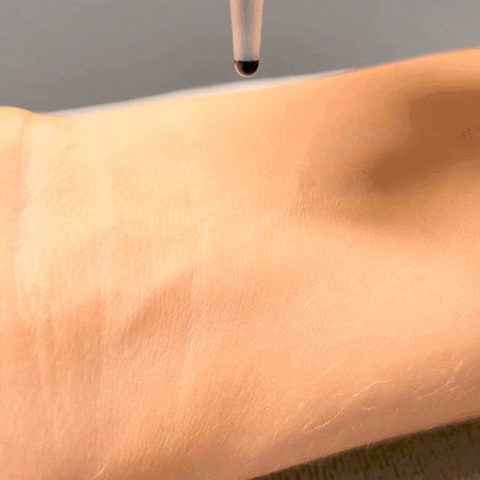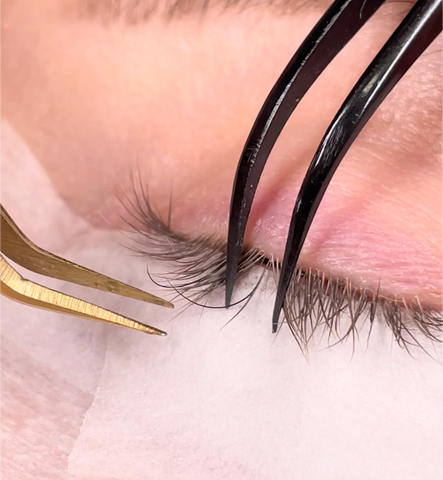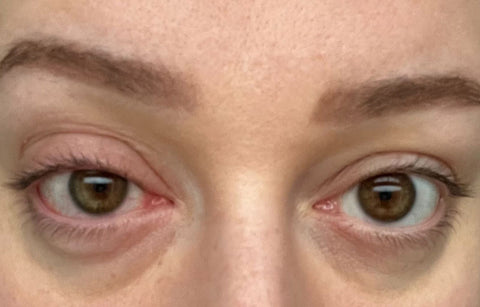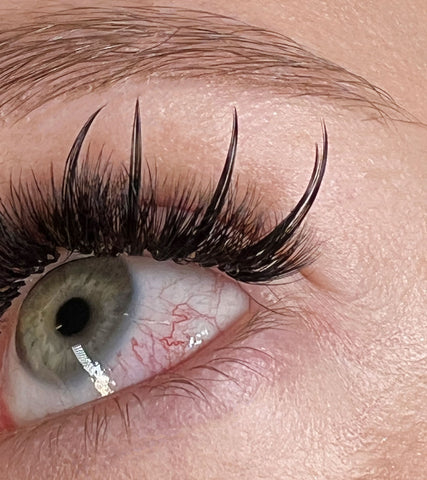FREE STANDARD SHIPPING FOR ORDERS OVER $170!
FREE STANDARD SHIPPING FOR ORDERS OVER $170!
New In
Glues & Liquids
Ebooks

A Guide to Lash Extensions Patch Testing
October 29, 2023 5 min read
The Pros and Pitfalls of Patch Testing: Dispelling Misinformation About One of the Most Debated Topics in Lash Extensions!
Any beauty treatment has its risks, one of the most dreaded being an allergic reaction to the products used. Apart from being uncomfortable, allergic reactions don’t look particularly nice, and they can lead to serious health issues if left unchecked. So, how do we ensure that our clients never have an allergic reaction to lash extension glue? Surely, a patch test would tell us once and for all…
What is a Patch Test?
A patch test is a way to make sure that your client is not allergic to whatever products you’re using on them. It’s called a patch test because it stems from hair dye patch testing, where a little of the dye is applied to the forearm or behind the ear in a patch and left for 24 hours to ensure that no irritation or allergy symptoms show up on the skin.
With eyelash extensions, a patch test is done for the same reason, though the way that it’s carried out is (or at least should be) quite different.
How to Do A Patch Test for Lash Extensions
There are two schools of thought on this, and one of them is outdated and is actually dangerous.

The outdated version is to apply a drop of glue to the forearm or behind the ear, just like you would if you were testing dye. This stems from the fact that, when lash extensions were a newly emerging treatment, insurance companies were requiring Lash Techs to patch test, as they always had for lash lifts, brow treatments, or hair dye.
The issue with that though is that while lash lift products and hair dyes do come into contact with the skin, lash extension glue should never touch the skin. Lash extension glue is exothermic, which means that it gives out heat, so when applied to the skin, it’s very normal for it to feel warm and to cause some redness. This essentially means that you get a false positive for your patch test.
Thanks to all of the developments in the lash industry with regard to evolving techniques and education, insurers have taken a less firm stance on how, and even if, patch tests for lash extensions are offered.
The more up-to-date, and much safer method simply involves applying a few very subtle extensions throughout the lashes on each eye. This is better because the glue is being used in the way it’s supposed to be, so the chance of a false positive is reduced significantly. However, the drawback is that it involves using a much smaller amount of glue than you would during a full set of lash extensions, so it can actually result in a false negative.

So Do You HAVE to Patch Test?
The majority of insurers will now refer you back to the supplier of your lash extension glue to see what their guidance is on providing patch tests for lash extensions, but it’s worth checking their policies anyway as if they do require you to complete one and you don’t, you won’t be covered in the event of a claim.
If your insurance company refers you to the supplier and you get your glue from us, we recommend that, at the very least, you offer a patch test to your clients and explain any and all associated risks with having lash extensions.
After explaining the potential risks of an allergic reaction and before applying the lashes, if your client refuses a patch test, it’s well worth having them sign a waiver stating that they opted not to have a patch test and that they have done so knowing the risks. This is just to cover you in the event that they have a reaction and try to press charges.
Is It Your Fault if A Client Has a Reaction?
Allergic reactions are our body’s way of telling us that they don’t like something. For some of us, it’s pollen and latex (which is not present in lash extension glue), and for others, it’s bee stings and cyanoacrylate.

An allergy isn’t anyone’s fault and can crop up at any time – it’s not unusual to become allergic to something over time as your body builds up an intolerance: this is most often the case with lash extension glue and is the reason you’re more likely to see an allergic reaction from a long-time client than you are from a brand new client (though that’s not to say that a new client will never have a reaction).
It would, however, be your fault if you know that a client has had an allergic reaction to lash extensions glue before and you give them another set of lashes. An allergy to lash glue is probably the biggest contraindication going.
What if a Client Doesn’t Tell You They’ve Had A Reaction Before?
This is another reason you get them to sign one of those forms when they visit you for the first time. You need all of this type of thing in writing with a date and their signature to cover you.
Your word against theirs won’t do you many favors if they have a reaction and press charges, so regardless of whether they say yes to a patch test or not, you need to get them to state on your consultation form that they do or don’t want a patch test (unless your personal policy is that patch tests are mandatory – that is an option and if it makes you feel safer, then implement that! You should always put the policies in place if they make sense for you and your business. If they state that they haven’t had a reaction before, when they have, then a subsequent reaction is on them and not you.
You can’t know a new client’s history with lashes, but you can prevent them from using it against you.
Can a Patch Test Show If a Person Will Get a Chemical Burn?
Anyone can get a chemical burn from eyelash extensions glue, and it’s not actually something that you need to test for, but rather something that you can actively avoid.

A chemical burn is the result of glue fumes going into the eyes while you’re applying the lash extensions, so you simply need to make sure that your client's eyes are completely closed while you’re working. Check out this blog post for tips and tricks about avoiding chemical burns.
All in all, patch tests for lash extensions are important to offer and may be something that your insurer requires. The most important thing is that your clients are aware of the risk that they may experience an allergic reaction to the lash glue, and that a patch test can give a false negative. By being clear with your clients and giving them options – or by being firm with your policies – you are building trust and establishing yourself as a conscientious professional, something that will keep them coming back to you time and again!
Subscribe
Sign up to get the latest on sales, new releases and more …






































